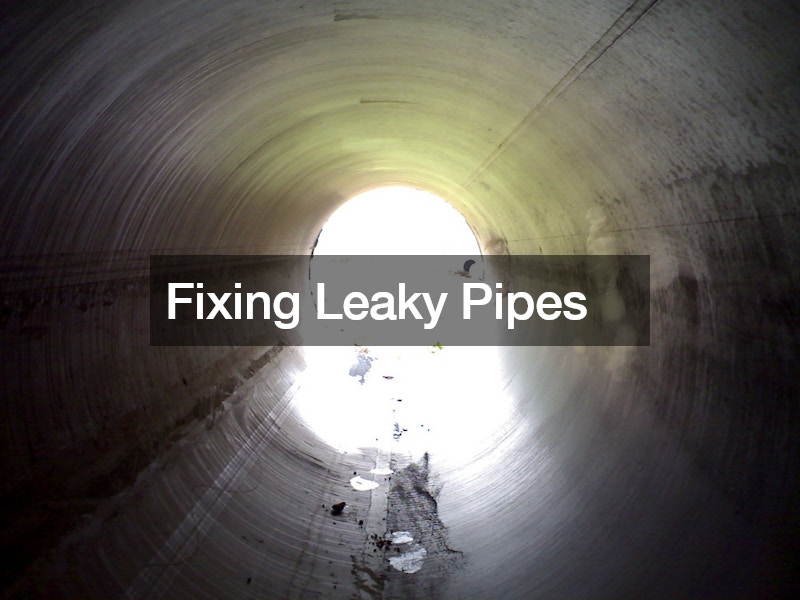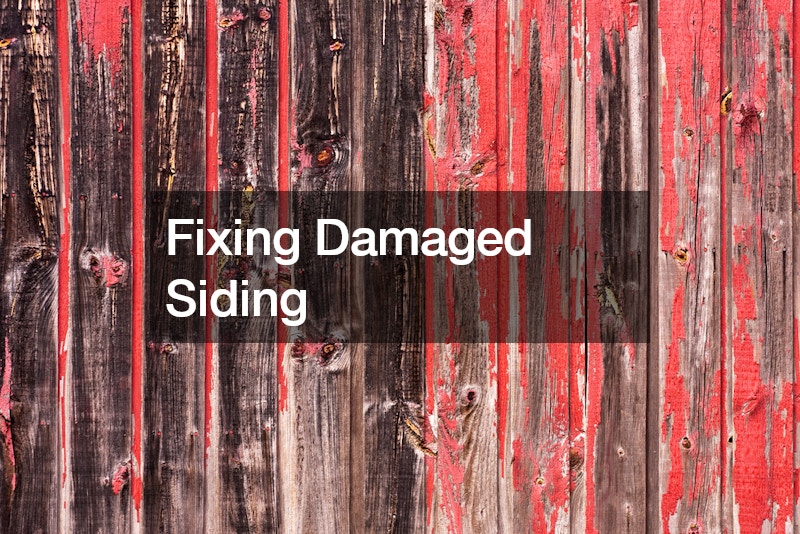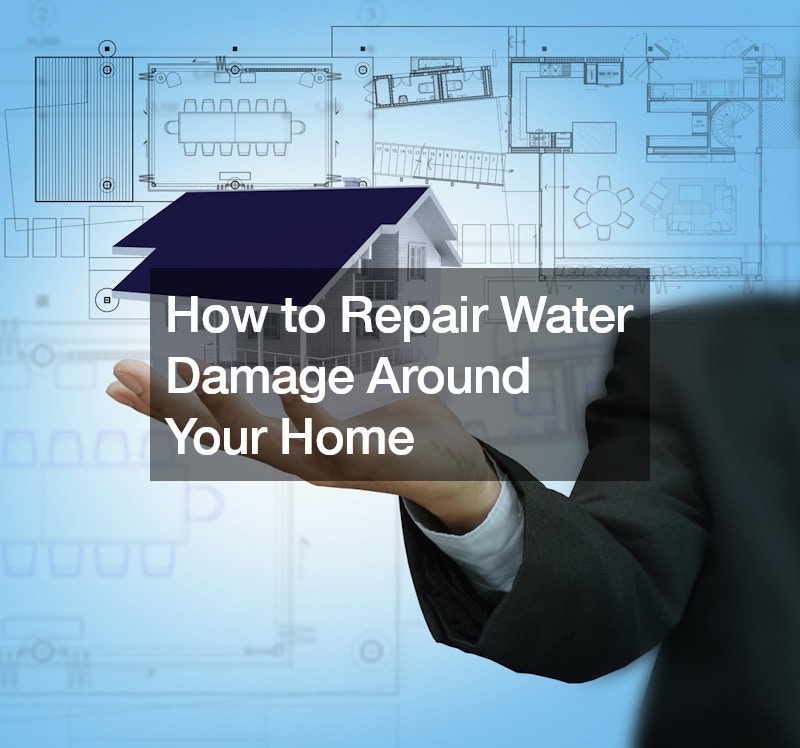Water damage can be a frustrating and costly issue to deal with, but with the right knowledge and tools, you can repair it effectively. Here is a guide to help you repair water damage around your home.
Identifying the Source of the Leak

When dealing with water damage, the first step is to identify the source of the leak. Look for signs such as water stains on walls or ceilings, musty odors, or puddles of water. These are all indications that there is a plumbing issue that needs to be addressed.
Check all plumbing fixtures in your home, including sinks, toilets, and showers, for any signs of leaks. You may need a water heater repair if your tank has a crack or other issue. Inspect the pipes for cracks or corrosion, which could be causing the water damage. Additionally, check the exterior of your home for any gutter system issues that may need gutter repairs, or roofing issues that may be allowing water to seep into your home.
If you are unable to locate the source of the leak on your own, it may be necessary to contact a professional plumber for assistance. They have the expertise and tools to pinpoint the exact location of the problem and provide the necessary repairs.
Fixing Leaky Pipes

One common source of water damage in homes is leaky pipes. To fix a leaky pipe, start by locating the source of the leak. This may require cutting away drywall or insulation to access the pipe.
If the leak is minor, you can attempt to repair it yourself using pipe sealant or pipe tape. However, for more serious leaks or damaged pipes, it is best to call a professional plumber. They can assess the situation and recommend the best course of action for repair.
Remember that ignoring a leaky pipe can lead to further water damage and potential mold growth. It’s important to address any plumbing issues promptly to prevent costly repairs in the future.
Identifying a Leaky Roof

A leaky roof can lead to water damage inside your home, so it’s important to identify the issue promptly. One of the signs of roof damage is water stains on your ceiling or walls, which may indicate a leak. You should also check your roof shingles for any signs of damage, such as missing or cracked shingles.
If you notice any signs of roof damage, such as water stains or mold growth, it’s crucial to address the issue promptly to prevent further damage. Contact a roofing company for a thorough inspection if you suspect you have a leaky roof. Ignoring roof damage can lead to more significant issues, such as structural damage and mold growth.
Inspect your roof shingles regularly for signs of damage, such as curling, cracking, or missing shingles. Replace damaged shingles promptly to prevent water from seeping into your home. Hire a professional roofer for any necessary repairs to ensure your roof is in top condition.
Clogged or damaged gutters can lead to water damage around your home, so it’s essential to inspect them regularly. Clean your gutters regularly to prevent clogs and ensure water can flow freely away from your home. If you notice any damage to your gutters, such as rust or holes, consider hiring a gutter repair company to address the issue.
Fixing Damaged Siding

If you notice water damage on your siding, it’s crucial to address the issue before it leads to further damage. Locate the source of the water damage on your siding by inspecting it carefully and looking for any cracks or holes. You can repair siding damage yourself by filling in small cracks with caulk or hiring a professional siding repair service for larger repairs.
Inspect your siding for any signs of water damage, such as mold growth, peeling paint, or warping. If you notice any issues, it’s essential to address them promptly to prevent further damage. Consider contacting a siding repair service for assistance with repairing any damage to your siding.
You can repair minor damage to your siding yourself by replacing damaged panels or filling in cracks with caulk. For more extensive damage, it’s best to hire a professional siding repair service to ensure the job is done correctly. Ignoring siding damage can lead to more significant issues, such as mold growth and structural damage.
If you have significant damage to your siding or are unsure how to repair it yourself, consider calling a siding repair service for assistance. A professional siding repair service can assess the damage and provide you with a quote for the necessary repairs. Hiring a siding repair service can save you time and ensure your siding is repaired correctly.
Determining Bathroom Leaks
Bathroom leaks can result in water damage and mold growth if left unchecked, so it’s essential to address them promptly. Locate bathroom leaks by checking for water stains on the ceiling, walls, or around fixtures such as sinks and toilets. You can repair a leaky shower or bathtub by replacing worn-out seals or calling a plumbing service for assistance.
To locate bathroom leaks, inspect your bathroom fixtures, such as sinks, toilets, and showers, for any signs of water leakage. If you notice any water stains or puddles around these fixtures, it’s likely you have a leak that needs to be addressed. Contact a plumbing service to locate and repair the leak before it leads to more significant water damage in your home.
To repair a leaky shower or bathtub, start by replacing worn-out seals or caulking around the fixtures. If the leak persists, you may need to call a plumber to inspect the plumbing and make any necessary repairs. Ignoring bathroom leaks can lead to mold growth and damage to your home’s structure, so it’s crucial to address them promptly.
If you’re unable to locate or repair a bathroom leak yourself, consider calling a plumbing service for assistance. A professional plumber can assess the issue and provide you with a quote for the necessary repairs. Hiring a plumber to repair bathroom leaks can save you time and ensure the job is done correctly to prevent further damage.
Repairing Water Stains
Water stains on walls or ceilings are a common result of water damage. To repair water stains, start by removing any stained drywall or ceiling material. Use a putty knife to scrape away the damaged area.
Apply a stain-blocking primer to prevent the water stain from bleeding through the new paint. Once the primer is dry, you can repaint the affected area to match the surrounding surface. This will not only improve the appearance of your home but also prevent further water damage.
If the water stains are extensive or difficult to remove, consider hiring a professional contractor or restoration company to handle the repairs. They have the expertise and equipment to restore your home to its original condition.
Drying Out Wet Areas
After repairing the source of the water damage, it is important to thoroughly dry out any wet areas in your home. Use fans and dehumidifiers to circulate air and remove moisture from the air. This will prevent mold growth and further damage to your home.
Open windows for ventilation and allow fresh air to flow through your home. This will help speed up the drying process and reduce humidity levels. Additionally, use a wet/dry vacuum to extract excess water from carpets, floors, or other surfaces.
Properly drying out wet areas is essential for preventing mold growth and additional water damage. Take the time to thoroughly dry out all affected areas to ensure the long-term integrity of your home.
Dealing with Mold Growth
Mold can quickly grow in damp or wet areas of your home, leading to health issues and further damage. To deal with mold growth, start by scrubbing the affected area with a bleach solution. This will kill the mold spores and prevent them from spreading.
Use a mold inhibitor spray to treat the area and prevent future mold growth. This will also help eliminate musty odors often associated with mold. Be sure to remove any moldy materials, such as drywall or insulation, to prevent the mold from returning.
If the mold growth is extensive or difficult to remove, consider hiring a professional mold remediation company. They have the expertise and equipment to safely remove the mold and restore your home to a healthy environment.
Repairing Water-Damaged Flooring
Water-damaged flooring can be unsightly and dangerous if left untreated. To repair water-damaged flooring, start by removing any damaged flooring material, such as carpet or hardwood. Use a utility knife or saw to carefully cut away the damaged area.
After removing the damaged flooring, thoroughly dry and clean the subfloor to prevent mold growth. Use fans and dehumidifiers to expedite the drying process. Once the subfloor is dry, you can install new flooring to restore the aesthetics of the room.
If you are unsure how to repair water-damaged flooring on your own, consider hiring a professional contractor or flooring specialist. They can recommend the best course of action for repair and ensure that the job is done correctly.
Fixing Water-Damaged Ceilings
Water damage can affect ceilings as well, leading to unsightly stains and potential collapse. To fix water-damaged ceilings, start by patching any holes or cracks with drywall compound. Smooth the compound with a putty knife for a seamless finish.
After patching the ceiling, refinish the surface with primer and paint to match the surrounding area. This will help blend the repaired section with the rest of the ceiling. Be sure to allow ample drying time between coats of primer and paint.
If you are uncomfortable repairing water-damaged ceilings on your own, consider hiring a professional contractor or handyman. They have the skills and experience to repair ceilings effectively and ensure a high-quality finish.
Preventing Future Water Damage
Preventing future water damage is essential to maintaining the integrity of your home. Regularly inspect your plumbing system for leaks or damage, and address any issues promptly. This will help prevent costly repairs and potential water damage in the future.
Consider installing a sump pump in your basement or crawlspace to prevent flooding during heavy rainfall. A sump pump can help remove excess water and protect your home from water damage. Additionally, seal cracks and gaps in your home’s foundation to prevent water from seeping in.
Regular maintenance of your roofing and gutters can also prevent water damage. Clean gutters regularly to ensure proper drainage, and inspect your roof for missing or damaged shingles. Addressing these issues early on can prevent water damage to your home.
Handling Insurance Claims
When dealing with water damage, especially if it’s from a flood, it is important to document the damage for insurance purposes. Take photos and videos of the affected areas to provide evidence of the damage. Contact your insurance company as soon as possible to file a claim and request an inspection. They may be able to work with a flood damage company to help restore your home.
Follow up on the claim and provide any additional information or documentation requested by your insurance company. Be sure to keep a record of all interactions with your insurance company for reference. This will help expedite the claims process and ensure a swift resolution.
If you encounter any challenges or difficulties with your insurance claim, consider hiring a public adjuster to assist you. They can help navigate the claims process and advocate for a fair settlement on your behalf.
When to Call a Professional
While some water damage repairs can be done DIY, there are instances where it is best to call a professional for assistance. If you are dealing with complex plumbing repairs, such as sewer line repair or well pump services, it is best to contact a licensed plumber.
Extensive water damage that affects multiple areas of your home may require the expertise of a professional restoration company. They have the equipment and knowledge to address water damage effectively and prevent further issues. Additionally, if you notice any structural damage to your home, such as sagging floors or walls, it is imperative to seek professional help immediately.
Remember that professional plumbers, contractors, and restoration experts are trained to handle water damage effectively. Do not hesitate to contact them for assistance if you are unsure how to proceed with repairs.
By following these steps and tips, you can effectively repair water damage around your home and prevent future issues. Remember, when in doubt, always consult a professional plumber or restoration expert for help.
